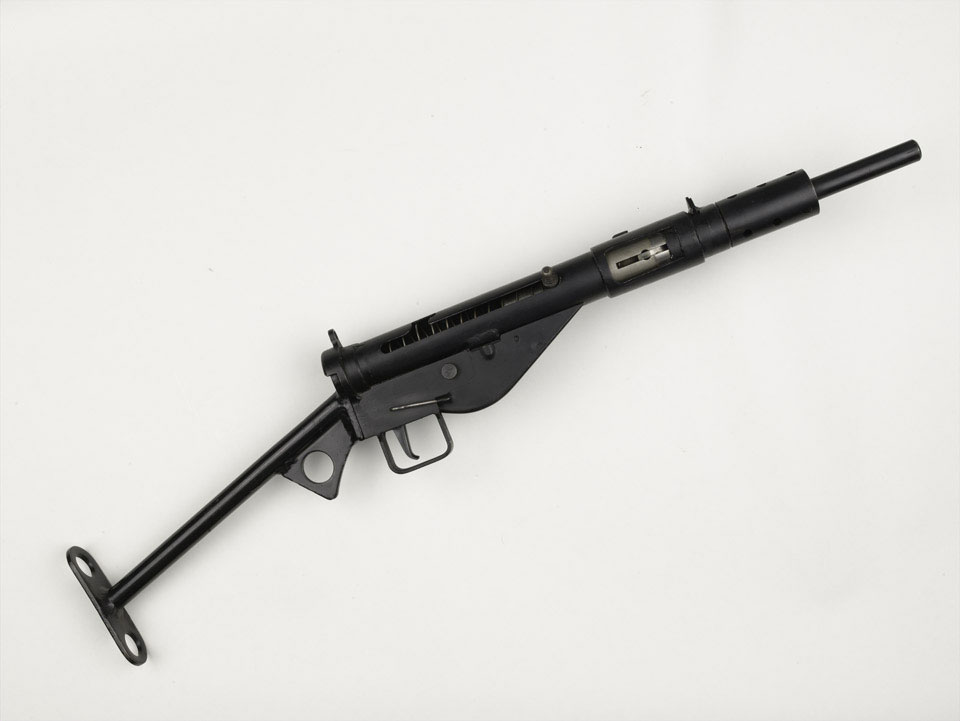

It uses the receiver main spring-loaded return-spring cap.

The under folding stock is rudimentary but effective, the butt plate swivels free but the lock up is quite secure. Rear right of the weapon close up of its pistol grip, stock and trigger housing (Matthew Moss) The weapon has a short, 3.5 inch, perforated fore-end welded onto the front of the tube receiver that appears to be from a Lanchester. The entire weapon is covered by a layer of textured, crackle paint finish, this was commonly used on commercial Sterling Mk4 submachine guns. No production Variant of the Sten was fitted with an under-folding stock, the Australian Austen, however, directly copied the MP38/40. left side of the Sten with the stock folded flush under the receiver (Matthew Moss) Very little is known about the hybrid Sten with Peter Laidler’s book The Sten Machine Carbine mentioning it and the later Osprey book by Leroy Thompson sharing a photograph and brief caption which calls it an “experimental version of the Mk III.” It is also unclear exactly when it was built.īelow are some photographs I took of the Sten, lets look at some of the interesting features of the Hybrid Sten. Added to this was a proprietary folding stock and a new fire control group and pistol grip. The weapon combined a MkII Sten’s receiver with a MkIII’s magazine housing.

During our first research trip last spring I had the opportunity to examine an unusual ‘hybrid’ Sten submachine gun.


 0 kommentar(er)
0 kommentar(er)
